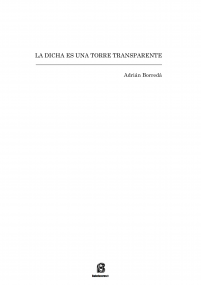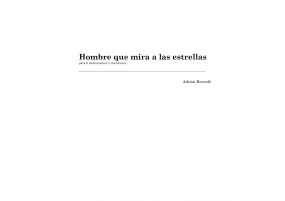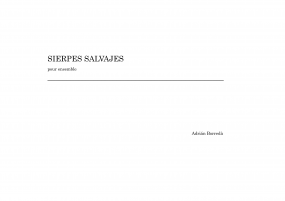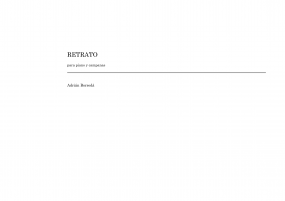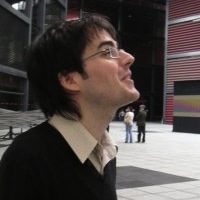
Adrian Borredà
Play all audio recordingsWhen I was 13 my parents bought me a piano. I was already a conservatory student on classical guitar , but it was only at this moment that I began to compose. At the beginning it was a kind of improvisations that I played in a loop, later I began write because I could not play them or because I was listening to other instruments too. In 2004 I met the composer José Manuel López, who had a strong influence in my way of listening. In 2006 my piece Color de trigo was premiered at the Centre Acanthes in Metz with a great success. Because of this experience I could come to Paris, where I am currently studying a Master in Composition with Gérard Pesson in the Conservatoire National Supérieur de Musique et Danse de Paris. Other pieces were written soon after. Cantos I for two marimbas, a piece who won the 1st Composition Prize for marimbas NEXEduet, was the first piece in which the influence of classical chinese paintings was developed: chords-figures floating in the middle of big silences and superpositions of complex rythms that I call “stone waves”. Later I wrote Canción para Yumiko for solo flute and the quintet La dicha es una torre transparente, which was played at the Merkin Hall in New York on the occasion of an exchange of students. Nuut, a short piece for big orchestra who was written after the piece with the same title by Gérard Grisey for solo saxophone, was premiered at the Théâtre du Châtelet by the Orchestre Pasdeloup in january 2009. My New York staying was very important for later works. Sierpes salvajes, who was commissioned by the Grup Instrumental de Valencia, is my first long piece – as it has four movements which only the first and the second are already written. Finally, Hombre que mira a las estrellas for nine instruments and electronics, commissioned by the Espai Sonor ensemble, is something like a musical labyrinth strongly influenced by David Lynch's films and by Michaël Levinas' music. When I compose, it's very important for me to work with the interpreters. So it happens with the Duo Links, Le Balcon ensemble, the choir Les Cris de Paris, the conductor Pablo Rus, the flutist Salvador Torre, the saxophonist Vicent Minguet, and specially the percussionist Sisco Aparisi. They are wonderful, all of them.
Ordered by year. Most recent works appears first
Adrian Borredà
Adrian Borredà
Adrian Borredà
Adrian Borredà
Adrian Borredà
Results 1 - 5 of 5
Canción para Yumiko (2010)
Hombre que mira a las estrellas (2010)
La dicha es una torre transparente (2010)
Retrato (2005)
Sierpes salvajes (2009)
Hombre que mira a las estrellas (2010)
La dicha es una torre transparente (2010)
Retrato (2005)
Sierpes salvajes (2009)

